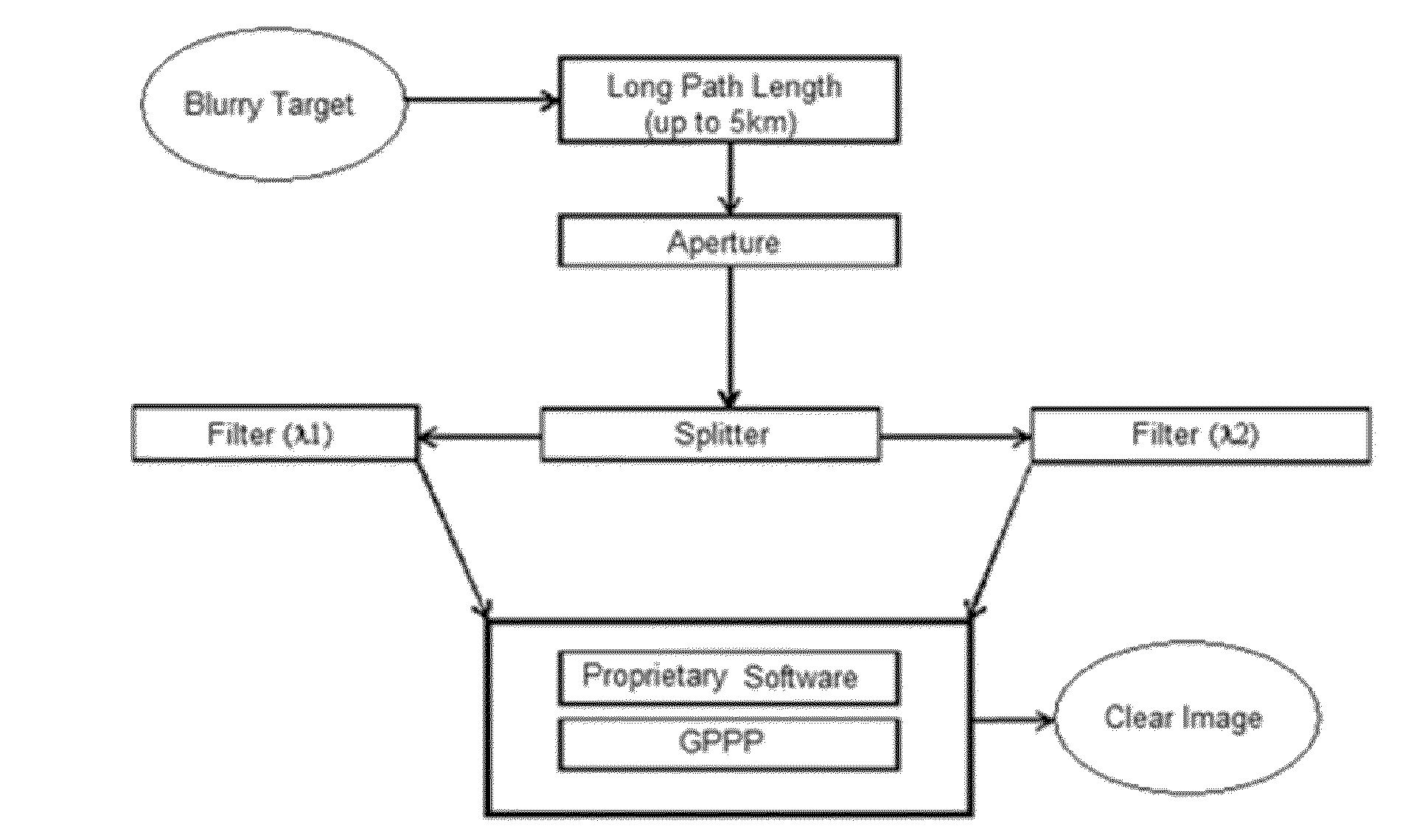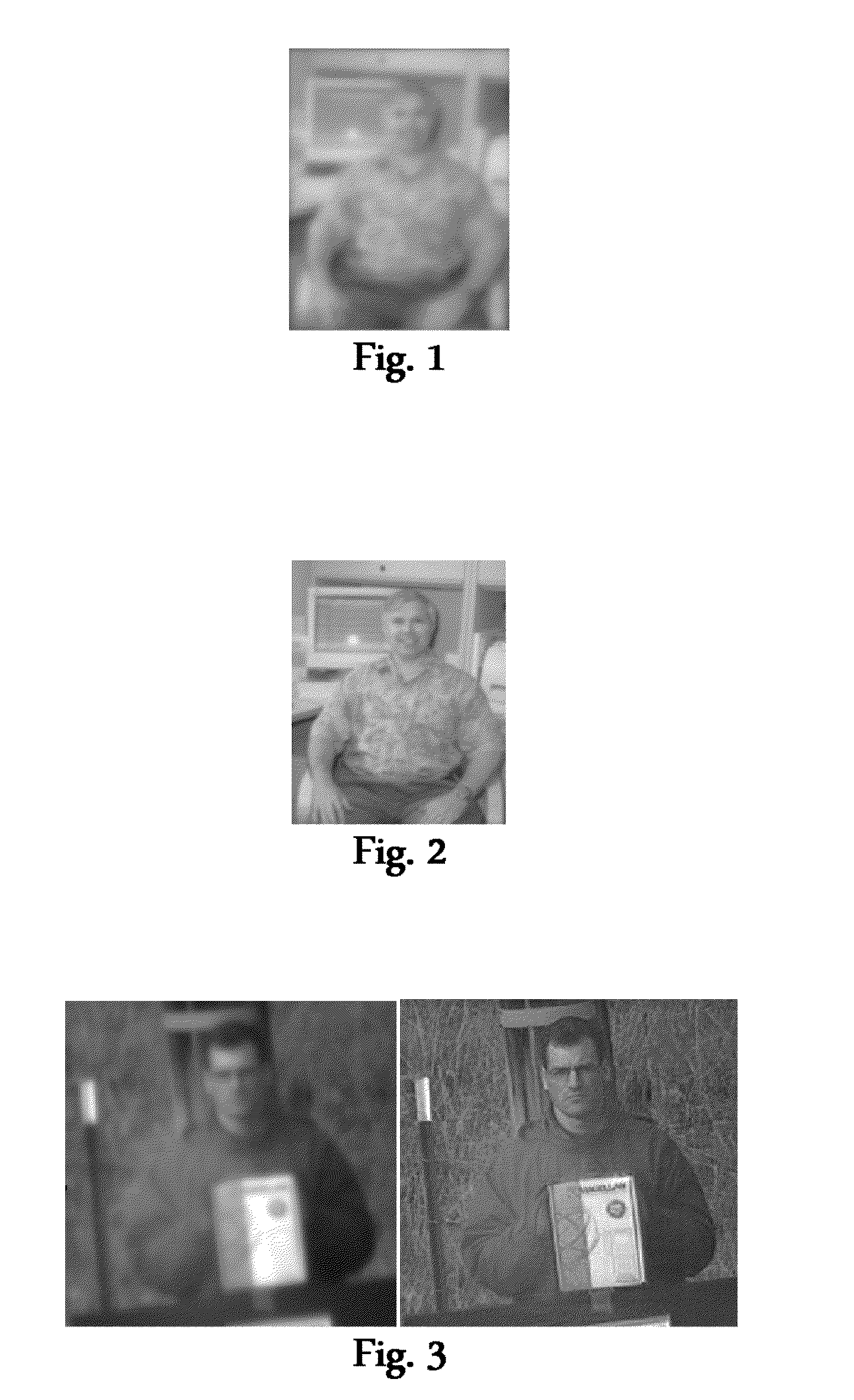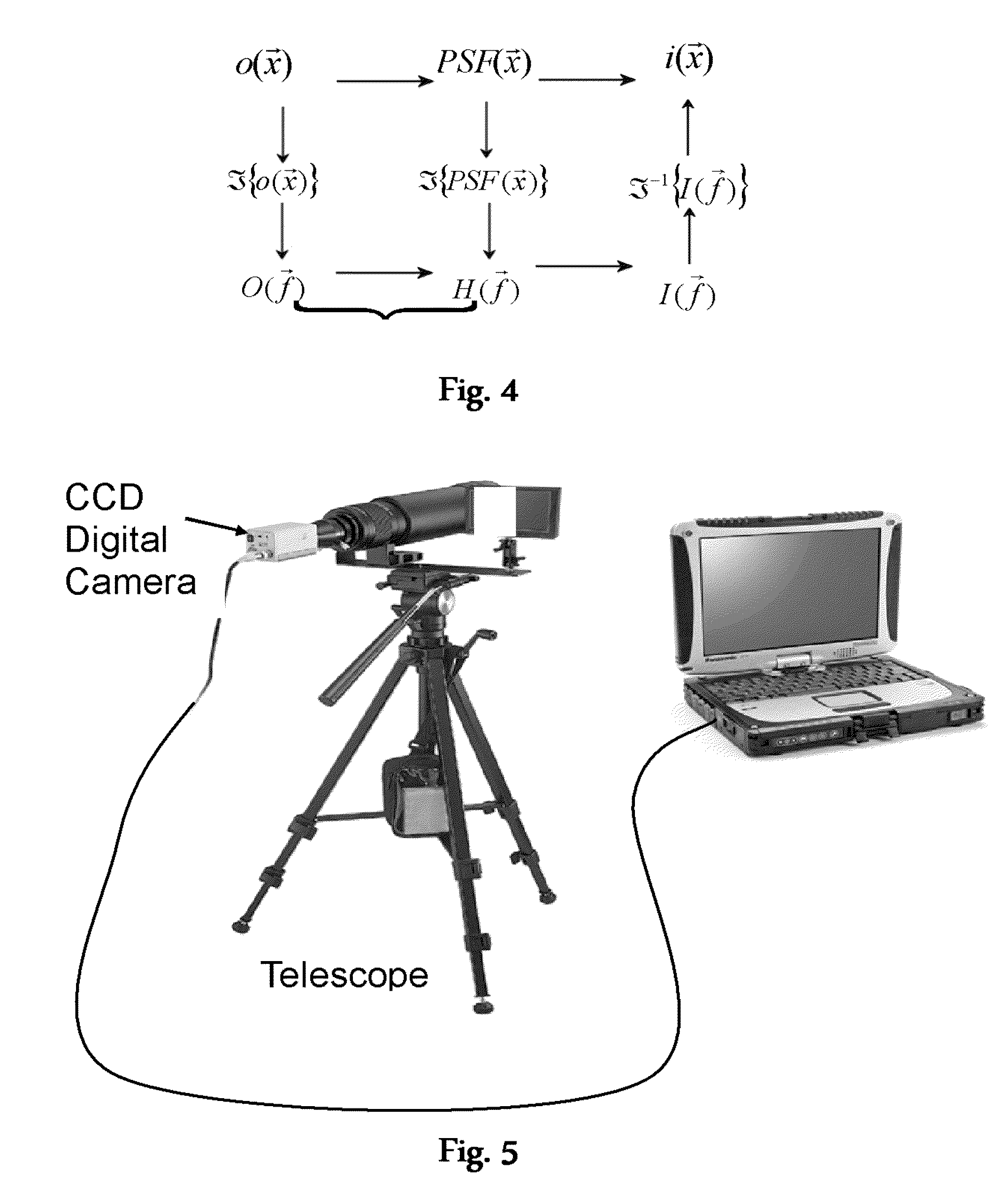High-Speed Diversity-Based Imaging Method for Parallel Atmospheric Turbulence Compensation
a diversity-based, parallel imaging technology, applied in the field of compensation for high-speed atmospheric turbulence effects, can solve the problems of many sequential images, high computational intensity, slowness, etc., and achieve the effects of reducing computational requirements, reducing computational costs, and facilitating further streamlined computational processes
- Summary
- Abstract
- Description
- Claims
- Application Information
AI Technical Summary
Benefits of technology
Problems solved by technology
Method used
Image
Examples
Embodiment Construction
[0072]The present invention is a system and methodology used to provide real-time, software-dominant, non-iterative atmospheric turbulence compensation based on a modified traditional “diversity” technique and the use of a general-purpose parallel-processing (GPPP) device. Components can be commercial-off-the-shelf (COTS) components and design options are provided for generalizing the approach to any camera or video system. In essence, the required hardware includes a camera lens or telescope for image magnification, a multi-spectral camera (commercially available) or a special lens adaptor designed to integrate with the camera for general purpose digital cameras or digital video recorders, and a laptop computer fitted with a PCMCIA form-factored GPPP such as the Xilinx XC5VSX95T. Note that this GPPP is representative only and alternative GPPPs can be used if desired.
[0073]When looking at the steps required in many traditional diversity-based atmospheric turbulence compensation meth...
PUM
 Login to View More
Login to View More Abstract
Description
Claims
Application Information
 Login to View More
Login to View More - R&D
- Intellectual Property
- Life Sciences
- Materials
- Tech Scout
- Unparalleled Data Quality
- Higher Quality Content
- 60% Fewer Hallucinations
Browse by: Latest US Patents, China's latest patents, Technical Efficacy Thesaurus, Application Domain, Technology Topic, Popular Technical Reports.
© 2025 PatSnap. All rights reserved.Legal|Privacy policy|Modern Slavery Act Transparency Statement|Sitemap|About US| Contact US: help@patsnap.com



